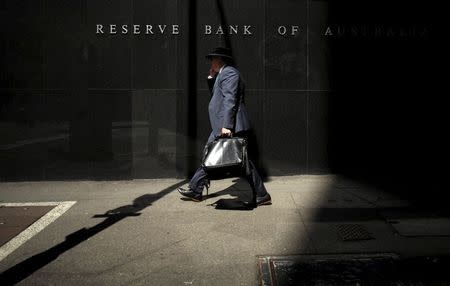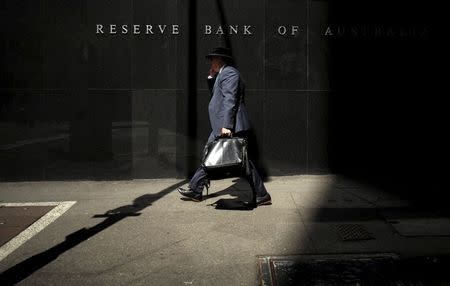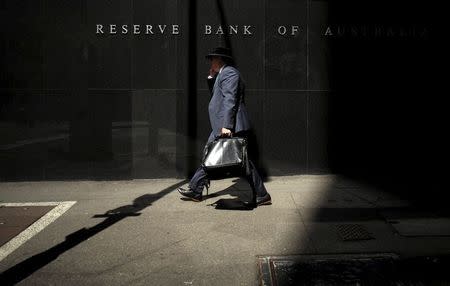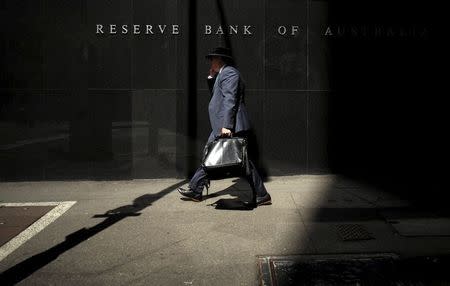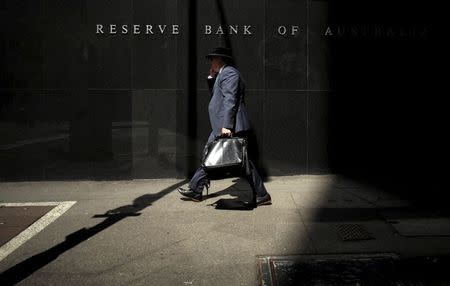Australia's RBA cuts rates, markets wonder if that's all
By Wayne Cole
SYDNEY (Reuters) - Australia's central bank cut interest rates for the second time this year on Tuesday, seeking to buttress the economy against sliding mining investment while heading off a harmful increase in the local dollar.
The currency did initially drop after the Reserve Bank of Australia (RBA) trimmed its cash rate a quarter point to a fresh all time trough of 2.0 percent. Yet it soon rallied as investors wondered whether the easing cycle might now be over.
Indeed, the statement announcing the move noted some improvement in the economy while omitting a mention that further action could prove necessary.
"The Board judged that the inflation outlook provided the opportunity for monetary policy to be eased further, so as to reinforce recent encouraging trends in household demand," said RBA Governor Glenn Stevens.
He also offered a nod to recent better data.
"The available information suggests improved trends in household demand over the past six months and stronger growth in employment."
As a result, interbank futures <0#YIB:> dipped from July onward and short term yields climbed as the market pared back the prospects of rates going under 2 percent. The local dollar first slid half a U.S. cent only to more than reverse the drop to stand at $0.7910.
"The statement is balanced and a bit more positive," said Su-Lin Ong, a senior economist at RBC Capital Markets.
"Implicit is that they are fairly comfortable with where rates are now," she added. "There is a good chance the cash rate goes below 2 percent but we know the hurdle to cut further is high. It won't happen until much later in the year."
While past cuts have fuelled a much-needed boom in home building they have also encouraged a speculative spike in Sydney house prices which has drawn the ire of regulators.
Ratings agency Fitch on Tuesday cautioned this latest easing would stoke the fire in Sydney property and only added to the case for tighter overview of bank lending.
LONGING FOR A LOWER A$
Though the RBA confounded expectations for cuts in March and April, the stars were better-aligned this time in large part due to a recent strengthening in the local dollar.
The currency touched a three-month top above 80 cents last week as a run of soft U.S. data undercut speculation the Federal Reserve would start raising its rates as early as June.
The rise was especially unwelcome as prices for iron ore, Australia's single biggest export earner, had halved to under $60 a tonne in a blow to company profits and tax revenues.
"Further depreciation (in the currency) seems both likely and necessary, particularly given the significant declines in key commodity prices," Stevens said on Tuesday.
The impact on government finances will be all too evident when Treasurer Joe Hockey delivers his 2015/16 Budget next week, with deficits likely out to the end of the decade.
Hockey on Tuesday welcomed the latest cut in rates, claiming that the government's efforts to control spending had provided the room for the RBA to move.
The central bank will now have a chance to expand on its thinking in a quarterly review of the economy and policy due out on Friday.
(Editing by Eric Meijer)


